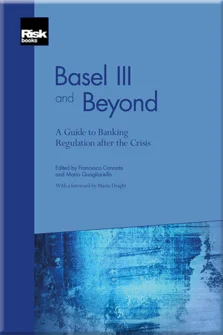The Regulatory Leverage Ratio
Alan Adkins
The Regulatory Leverage Ratio
Foreword
Introduction to 'Basel III and Beyond'
The Big Financial Crisis
The Policy Response: From the G20 Requests to the FSB Roadmap; Working Towards the Proposals of the Basel Committee
The New Definition of Regulatory Capital
A New Framework for the Trading Book
Counterparty Credit Risk and Other Risk-Coverage Measures
Tools for Mitigating the Procyclicality of Financial Regulation
The Regulatory Leverage Ratio
The New Framework for Liquidity Risk
The Discipline of Credit Rating Agencies
Systemically Important Banks
Regulating Remuneration Schemes in Banking
Crisis Management and Resolution
The Impact of the New Regulatory Framework
A Brazilian Perspective on Basel III
A New Institutional Framework for Financial Regulation and Supervision
Structural Regulation Redux: The Volcker Rule
The Changing Uses of Contingent Capital under the Basel III Framework
This article was first published as a chapter in Basel III and Beyond, by Risk Books.
7.1 Introduction
This section examines the notion of leverage in the context of bank regulation and introduces the rest of the chapter.
What is leverage? What is a leverage ratio?
The etymology of the word “leverage” refers to the action of a lever. In finance, the term has been adopted to refer to various techniques by which cashflows, gains or losses are multiplied to provide proportionately larger returns to the owners or investors of a company, instrument or fund.
With regard to banking11 The term “banking” is used here to describe all types of institution that take deposits and make loans. the term “leverage” is generally used to relate the extent to which the assets (and to some extent the off-balance-sheet commitments) of a bank are funded by equity, as opposed to deposit or other debt liabilities. The maturity transformation function that the banking sector performs means that it is an inherently leveraged industry. Therefore, the question for bank management and regulators is not whether leverage is desirable, but, rather, what is the appropriate degree of leverage
Copyright Infopro Digital Limited. All rights reserved.
As outlined in our terms and conditions, https://www.infopro-digital.com/terms-and-conditions/subscriptions/ (point 2.4), printing is limited to a single copy.
If you would like to purchase additional rights please email info@risk.net
Copyright Infopro Digital Limited. All rights reserved.
You may share this content using our article tools. As outlined in our terms and conditions, https://www.infopro-digital.com/terms-and-conditions/subscriptions/ (clause 2.4), an Authorised User may only make one copy of the materials for their own personal use. You must also comply with the restrictions in clause 2.5.
If you would like to purchase additional rights please email info@risk.net











